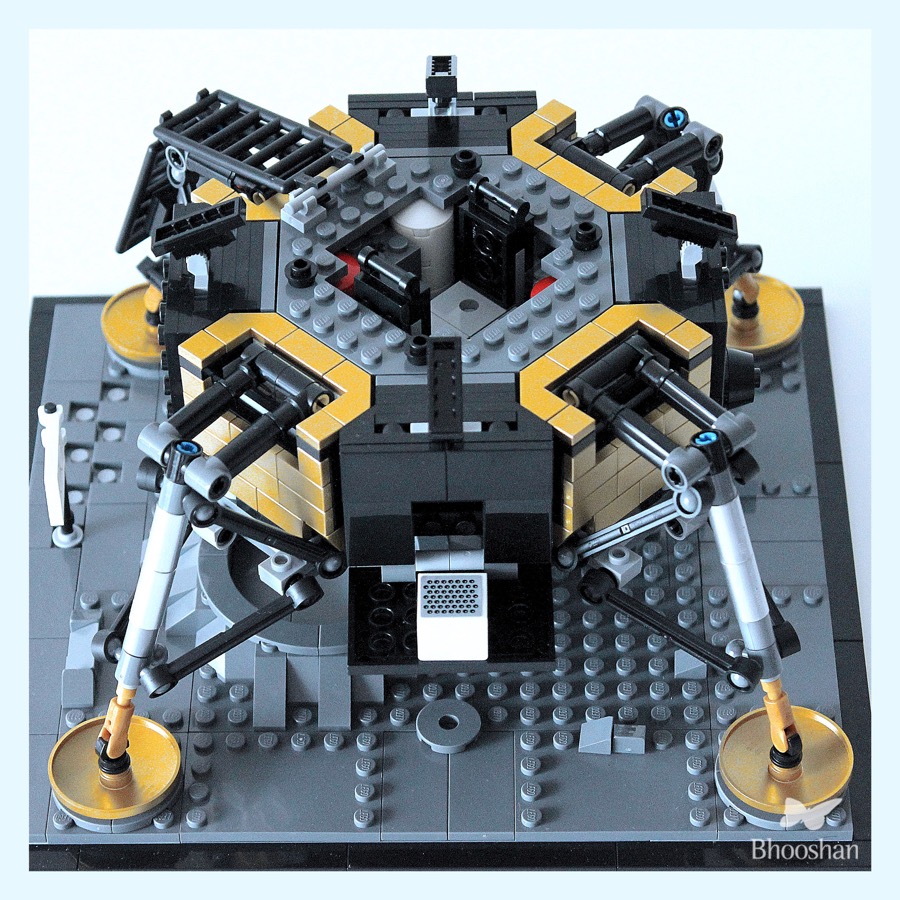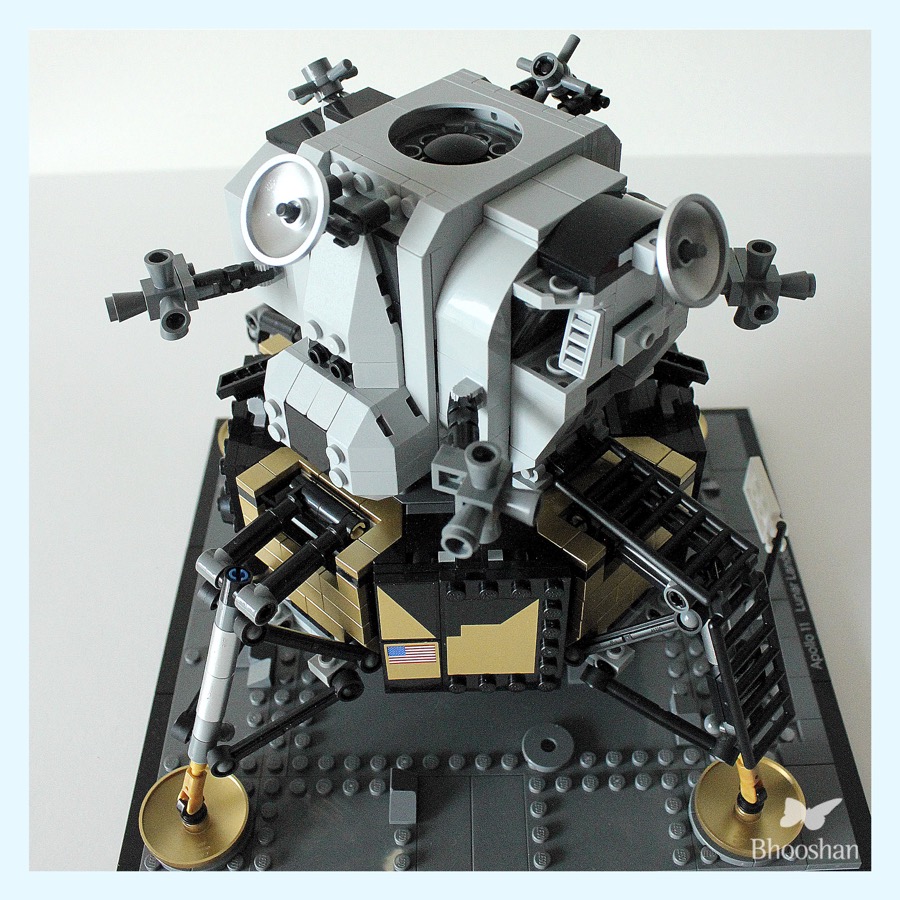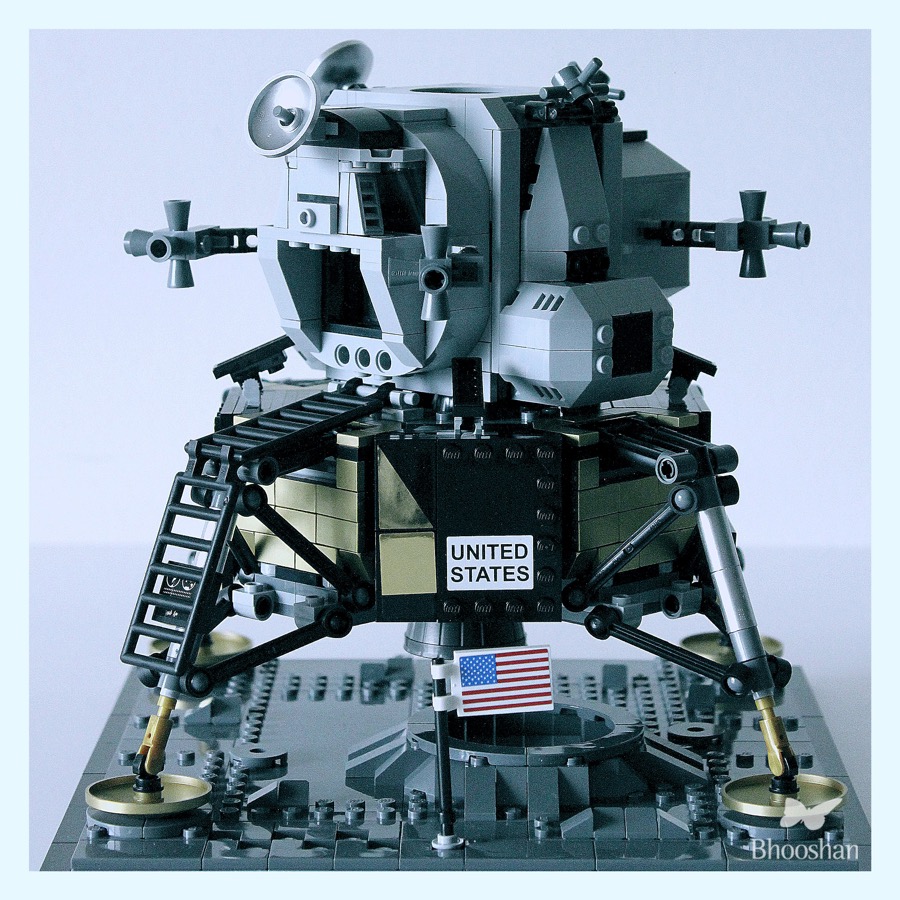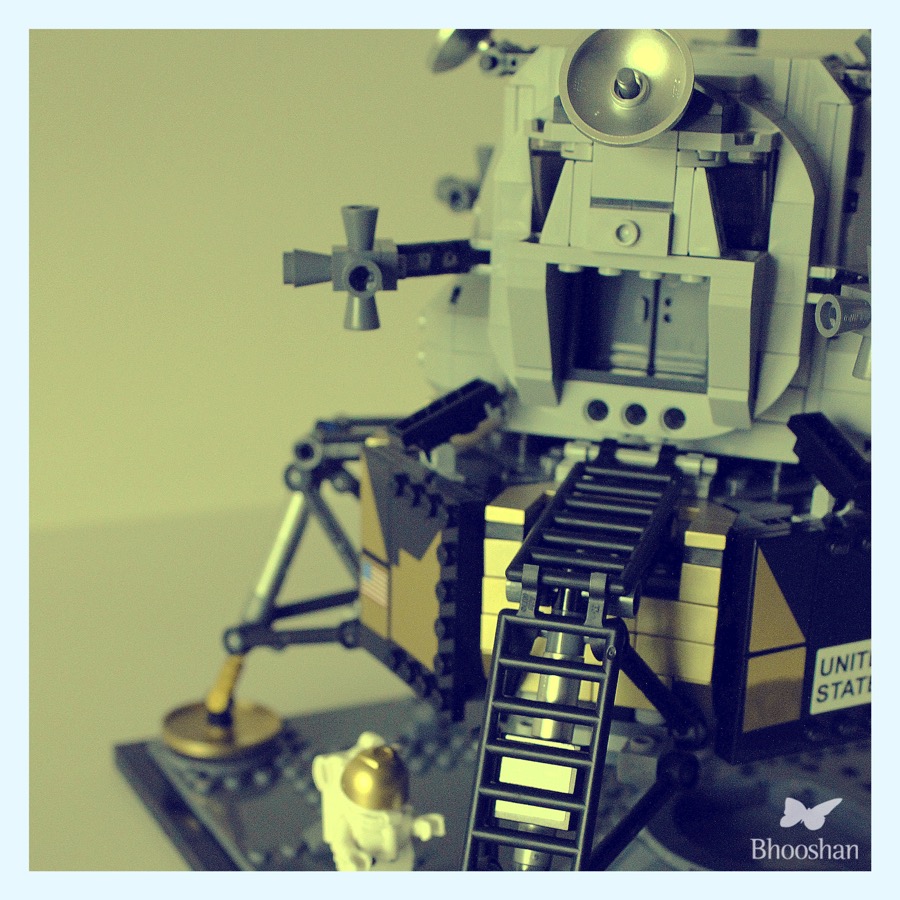Before I begin to write about the LEGO’s Lunar Lander, I thought I’d state a couple of reasons why this commemorative NASA Apollo 11 Lunar Lander (Creator – 10266) has come at a crucial moment. These are exciting times for space enthusiasts like myself. Firstly, India is preparing to launch the ambitious Chandrayaan-2 mission carrying an orbiter and a lunar rover (named ‘Pragyan’) to the southern pole of the Moon, making India the first nation to attempt landing a rover in that area. And also, we are closing in on the big event, the 50th anniversary of the first moon landing in 1969. So following the Apollo Saturn V here was another Apollo mission engineering masterpiece from LEGO’s creative factory!
Apollo 11 Lunar Lander (Module)
I appreciated the dexterity required in building the Saturn V just this past month from exactly 1969 bricks and right to this day, I continue to look at the 3-ft tall structure as one of the greatest most creative designs to come out of the LEGO studio, yet. Honestly, I was unaware until the Internet started buzzing with the release in the European market of the ‘Apollo Lunar Lander’, which they thankfully launched this month. And unless they’re also planning to add the Command & Service Module into the mix before the anniversary date this would signal the end of the Apollo mission series showcasing NASA’s engineering expertise and the collaborative effort in sending the first humans to the Moon. In a nutshell, the iconic Apollo 11 mission consisted of the behemoth Saturn V which transported the astronauts to the Moon whilst the Lunar Lander placed the Apollo astronauts, most notably Neil Armstrong and Buzz Aldrin, on the lunar surface and brought them home safely.
This ‘Creator’ Lunar Lander is also special for one more reason — LEGO has worked with NASA in developing this design to mark the historic 50th Anniversary.
I spotted the Apollo Lunar Lander on display at the LEGO Store last week and it was difficult to ignore the temptation of adding it to my growing collection. However, to my pleasant surprise, in addition to the Lunar Lander I also received a ‘Space Rocket Ride’ toy, a LEGO ‘Apollo Lunar Lander’ patch — similar in feel to the ‘Eagle’ patch of the Apollo 11 (pictures in this post), and some miscellaneous items as promo offers for a limited time. The purchase was definitely sweetened with the addition of these extra bricks and added to my fun of building more LEGOs this time.
Building the Lunar Lander
It’s not unusual to say this but I have to mention it that these Apollo designs from LEGO, including the Saturn V, are not just a treat to build but the level of detail that LEGO’s design studio has been able to capture despite the complex brick layout of the structures is quite remarkable. More so, after completing the Saturn V (1969 bricks) the excitement to continue building complex designs just multiplies, besides the pride in owning a piece of Moon history. In that sense, I feel the Lunar Lander was the missing piece I was looking for both in terms of complexity and as part of the Saturn V / Apollo 11 anniversary commemoration. Come July and the 50th anniversary, I’d have housed specimens of one of the greatest technological marvels that mankind has ever built in this century! I must confess, these latest Apollo builds have made me respect NASA all over again.
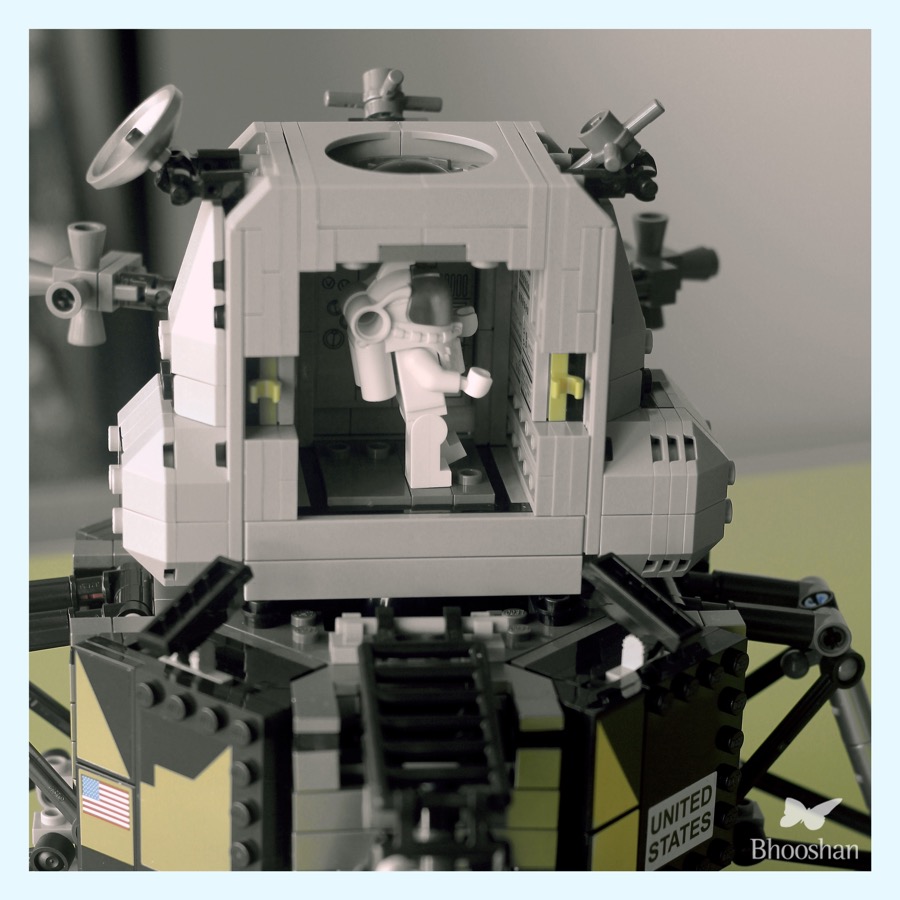
Inside the Lunar Module (Ascent Stage) 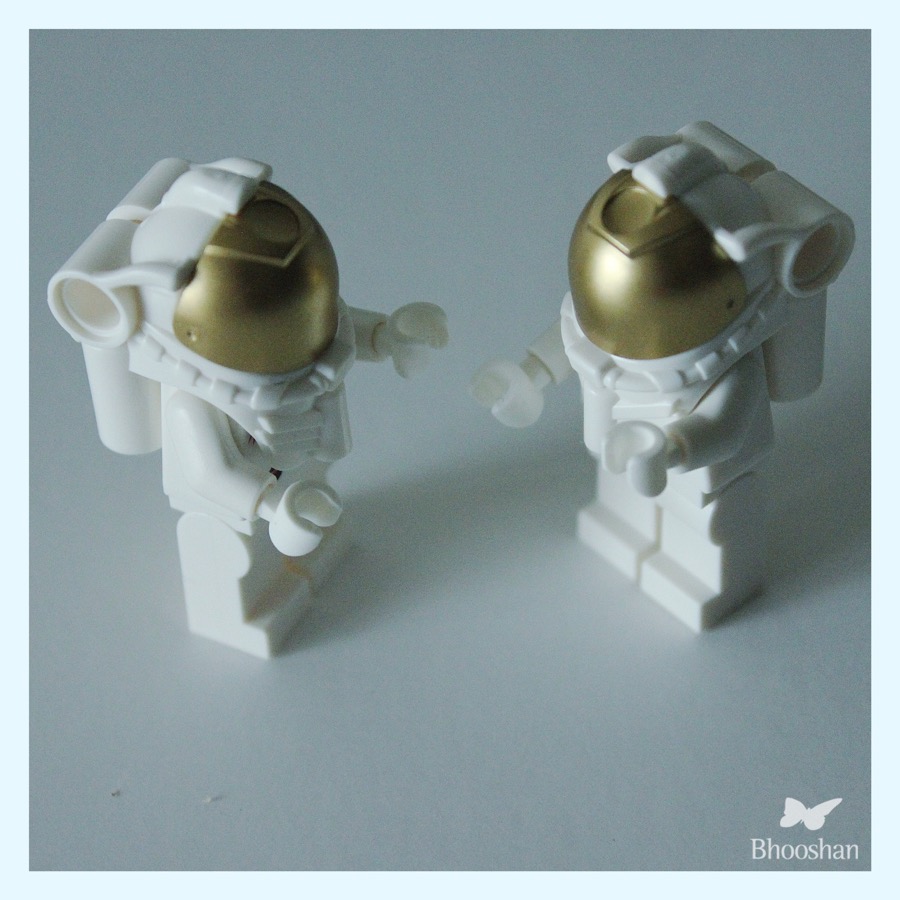
Astronauts 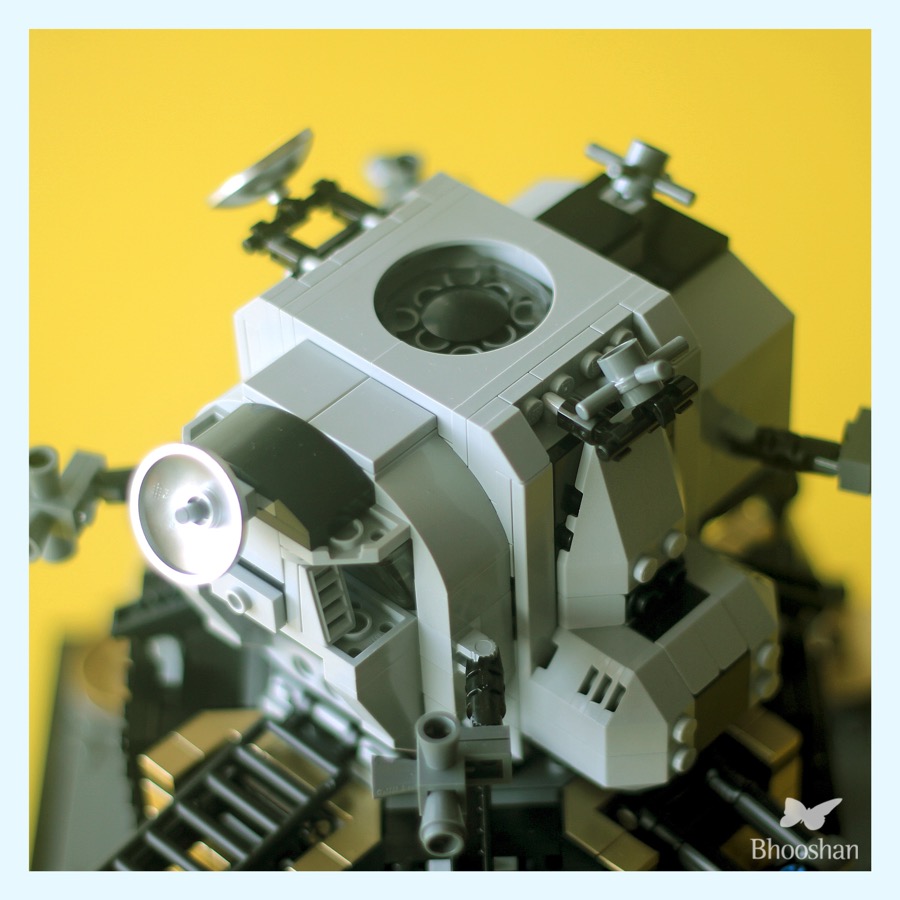
Lunar Module – Ascent Stage 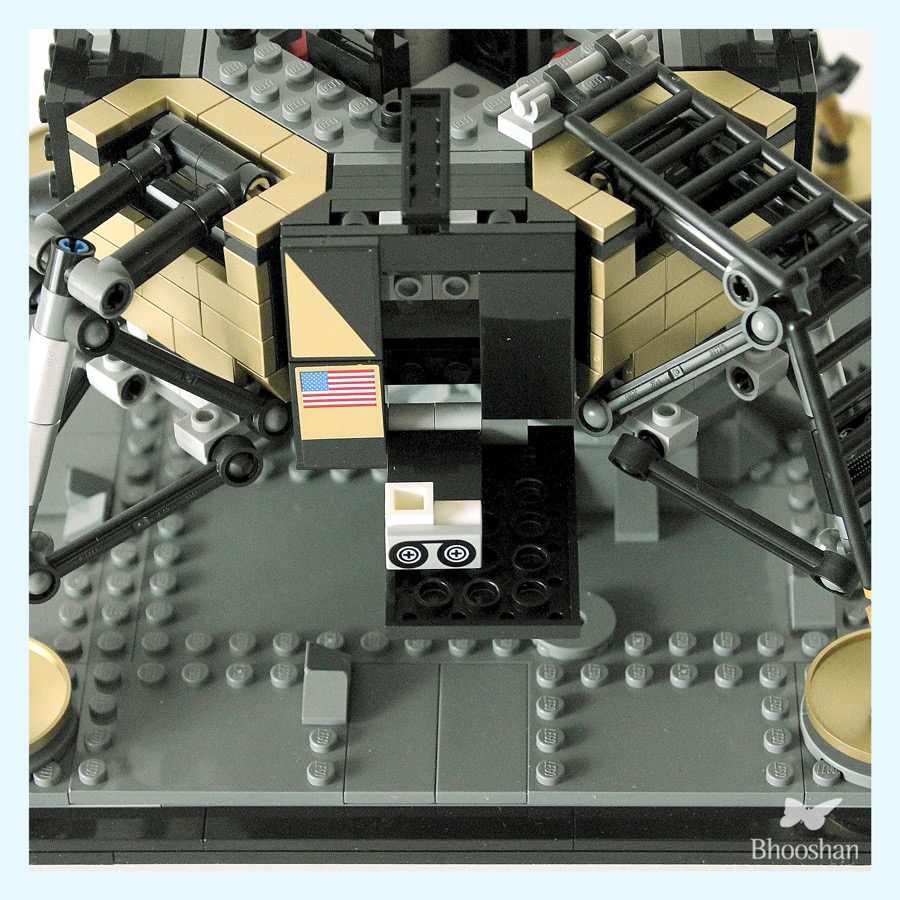
The Camera Neatly Tucked Inside 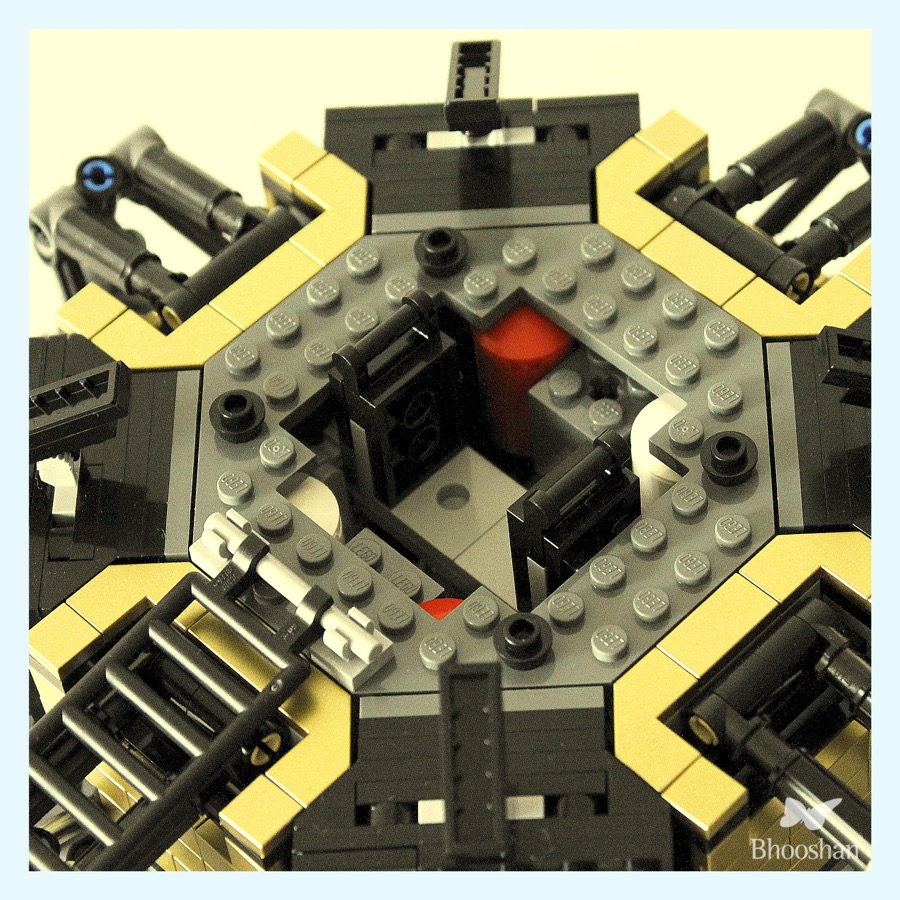
Two Pairs of (Red/White) Oxidiser & Fuel Tanks 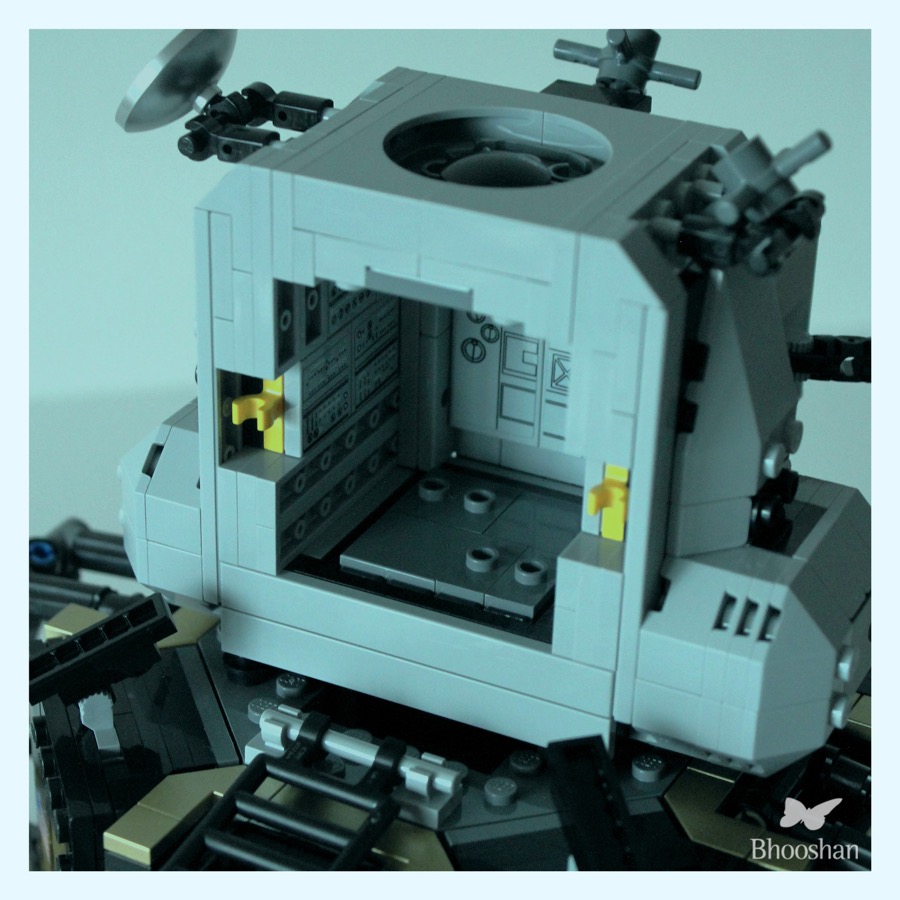
Apollo Lunar Lander (Ascent Stage) 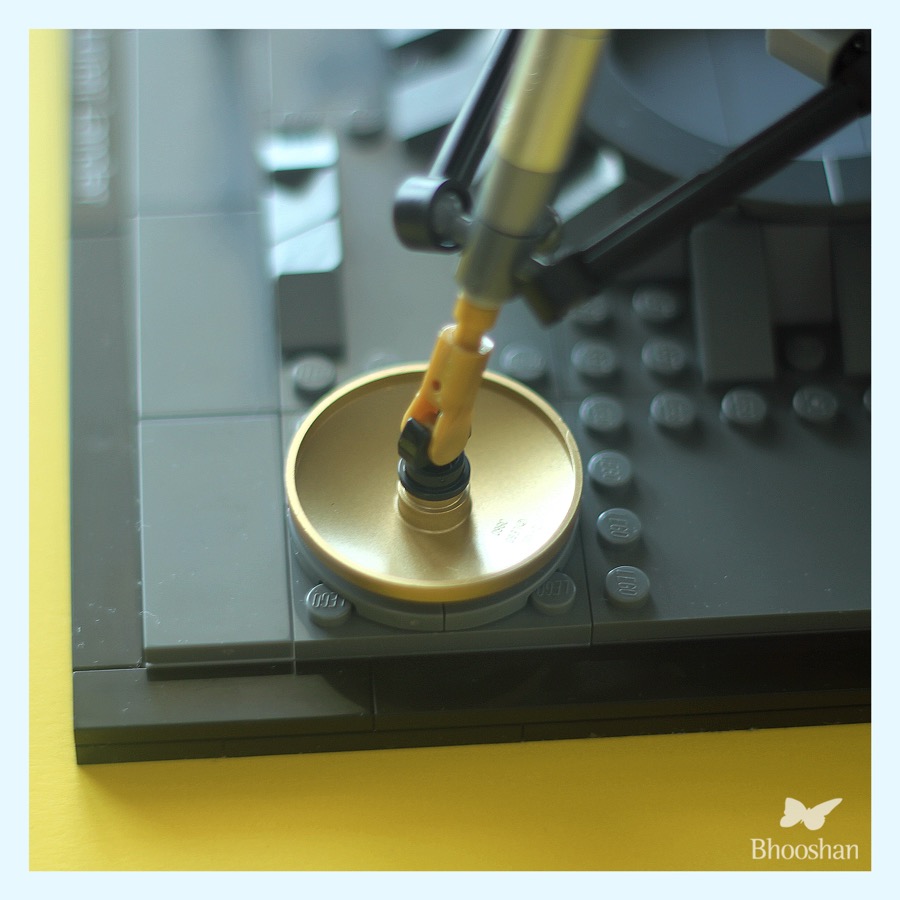
Landing Pad 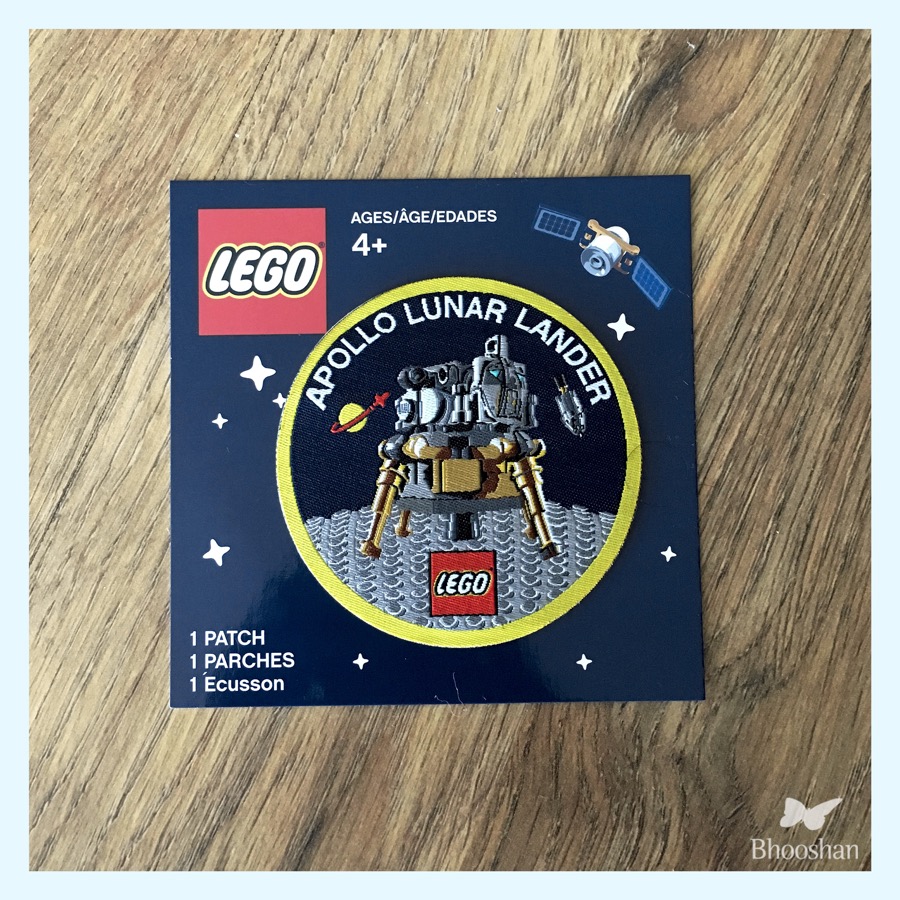
LEGO Apollo Lunar Lander Patch
I couldn’t help but take notes on the development of the Apollo Lunar Module:
- Originally designated the Lunar Excursion Module (LEM).
- Manufactured by Grumman Aircraft, it was capable of carrying a crew of 2 astronauts and was the first manned spacecraft to operate exclusively in the airless vacuum of space, it remains the only crewed vehicle to land anywhere beyond Earth.
- 10 Lunar Modules were launched into space, of which, 6 landed humans on the Moon between 1969 and 1972. The first two were launched in low Earth orbit. Another was used by Apollo 10 as “dress rehearsal” flight in low lunar orbit without landing. One lunar module was used as a “lifeboat” for the crew of Apollo 13. There were no failures or losses of the Lunar Module.
- The total cost of the Lunar Module for development and the units produced was $21.3 billion in 2016 dollars, adjusting from a nominal total of $2.2 billion.
Just a little note for this creative build. Colourful as it looks the ‘Space Rocket Ride’ is a cute 154 pieces build that rocks in a take-off motion with the turning of a lever switch at the back. As seen below, this is supposed to be coin-operated.
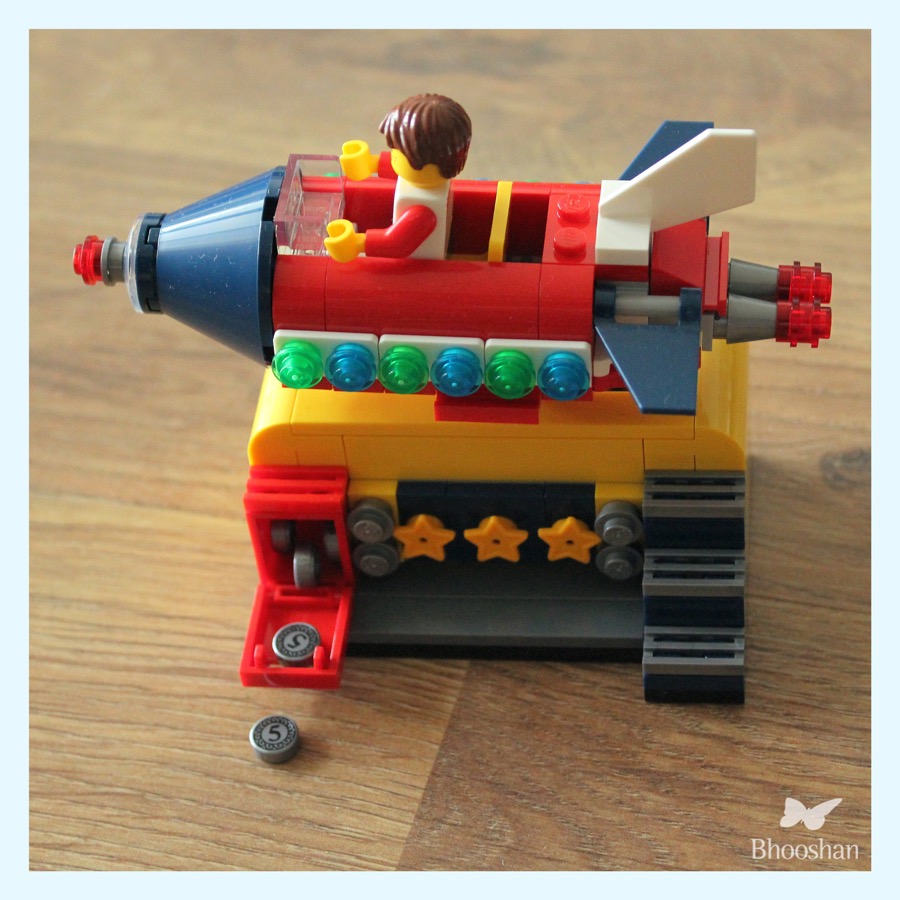
Space Rocket Ride 
Space Rocket Ride

